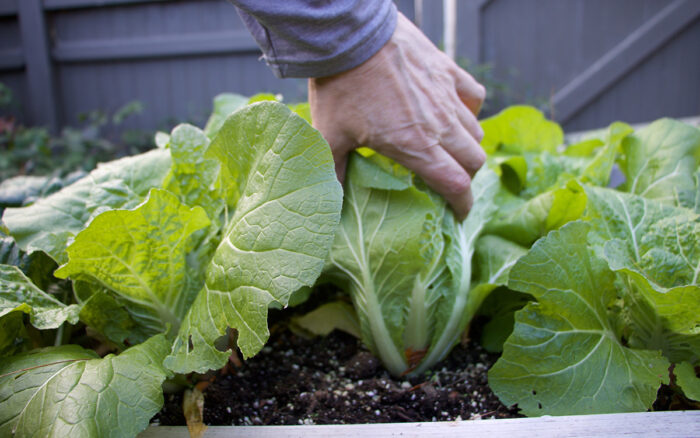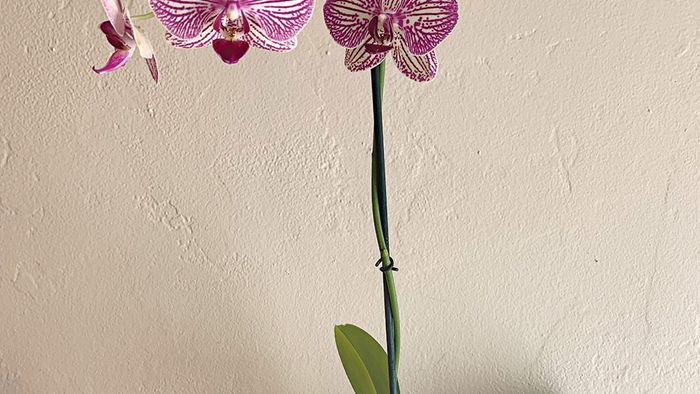
We are blessed with a long growing season on the Southern Plains, but getting a good crop of cool-season vegetables is not always easy. This is especially true for spring-sown crops that take a long time to mature, like broccoli and cabbage. Temperatures warm up quickly in spring, which can cause cabbage and broccoli plants to bolt (go to flower) before we are ready to harvest. The following strategies can help ensure a productive planting.
Get growing early
In Oklahoma, we can set cabbage plants in mid-February as soon as the ground can be worked. (In southern Texas, cabbage can be planted as early as mid-January; late March in much of Kansas). This typically allows enough time to produce a crop before the heat of summer sets in, but sometimes the weather does not cooperate. Planting is often delayed by wet or excessively cold weather, which pushes crop production into hotter weather.
Broccoli planting typically follows a month behind cabbage. Broccoli crops have a long maturation period, up to 90 days depending on cultivar, which means crops may not be ready to harvest until well into May. We all know how hot the Southern Plains can be in May.

The following strategies can help ensure soil is ready for planting as early as possible:
- Mulch with a dark-colored plastic cover or compost in the spring to help warm the soil. As the weather warms, remove black plastic to prevent excess heat, or cover it with straw.
- Improve soil drainage by planting in raised or mounded beds. Wet, heavy soil warms slower than well-drained soil.
- Cover beds with tarps to keep rain out as planting time approaches to avoid planting delays.
Cultivar selection
Cabbage and broccoli cultivars vary significantly in their maturation time. For example, green cabbage varieties may take anywhere from 65 to 95 days to mature, depending on variety, while broccoli cultivars can take between 60 and 90 days. The number of days to maturity is listed on seed packets and in catalogs. Look for varieties with a faster maturation time to ensure a harvest before temperatures get too hot.
Heat tolerance is another characteristic to look for in variety selection. The broccoli variety ‘Flash’ combines excellent heat tolerance with a fast maturation period. ‘Green Magic’ and ‘Green Emperor’ are also heat tolerant. For cabbage, ‘Green Boy’ and ‘Charmant’ are two heat-tolerant varieties to try. The heirloom variety ‘Charleston Wakefield’ has long been grown in Southern gardens.
Grow an alternative crop
Sprouting broccoli and broccoli rabe are gaining popularity in American kitchens and gardens. Rabe, or rapini, is an Italian favorite that produces edible leaves and flower buds similar to those of broccoli but much smaller and slightly bitter. Sprouting broccoli, often called broccolini in the grocery store, produces long tender stalks topped by small florets and has a sweet, mild flavor. Varieties to try include ‘De Cicco’, ‘Happy Rich’, and ‘Atlantis’. The advantage of sprouting broccoli and broccoli rabe is their short maturation period. Both crops can be direct-sown in the garden or transplanted from seedlings.
Chinese cabbage and pak choi are popular cabbage alternatives; however, they are prone to bolting. The good news is that these crops have a much shorter maturation time than cabbage. There are also several slow-bolting varieties available. For Chinese (Napa) cabbage, try planting ‘One Kilo Slow Bolt’ and ‘Maruba Santoh Round,’ both of which can be harvested 50 to 55 days after planting. Pak choi varieties ‘Asian Delight’, ‘Mei Qing’, and ‘Shanghai’ all mature within 35 to 45 days from planting.

Provide a little shade
While our crops certainly need sun to mature, we can provide afternoon shade to keep soil from getting too hot. If you have a support system in place, try installing a light shade cloth over the row. This will also keep many pests out. If you do not have a shade system in place, you can install tall wooden stakes along the western edge of the planting and use this to support shade cloth, snow fencing, or another type of mesh material to provide afternoon shade.
Experiment with different planting times
Many gardeners plant crops in succession to spread out harvest dates. This practice also allows gardeners to experiment with earlier planting times without sacrificing an entire crop to unexpected weather events. Try setting a few plants a week or so earlier than the main crop as weather allows.
Many gardeners in Oklahoma and Texas find more success with growing cole crops in the fall. Though establishing plants in the heat of summer can be tricky, the cool fall weather prevents plants from bolting. You can take steps to cool the soil by providing shade with shade cloth or screens set over the row and planting seeds or transplants in furrows. Be sure to mulch around transplants to cool soil and conserve soil moisture.
In the Southern Plains, broccoli and cabbage can be challenging crops to grow. However, with a little experimentation and careful seed selection, it is possible to produce a spring crop in most years. I say most years because you never know what Mother Nature will dish out.
—Kim Toscano is a horticulturalist based in Stillwater, Oklahoma. She previously hosted Oklahoma Gardening, a weekly PBS television program produced by the Oklahoma Cooperative Extension Service.
Fine Gardening Recommended Products

Gardener's Log Book from NYBG
Fine Gardening receives a commission for items purchased through links on this site, including Amazon Associates and other affiliate advertising programs.

Corona® Multi-Purpose Metal Mini Garden Shovel
Fine Gardening receives a commission for items purchased through links on this site, including Amazon Associates and other affiliate advertising programs.

A.M. Leonard Deluxe Soil Knife & Leather Sheath Combo
Fine Gardening receives a commission for items purchased through links on this site, including Amazon Associates and other affiliate advertising programs.


















Comments
Log in or create an account to post a comment.
Sign up Log in